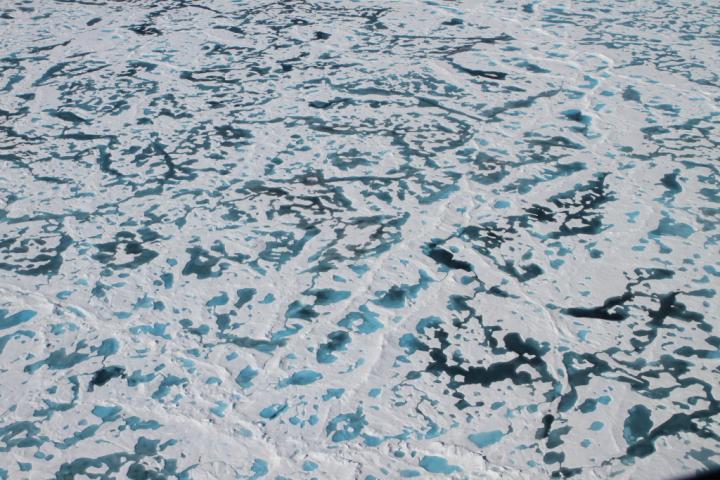What's Behind the Arctic's Mysterious Green Ice?

It should be dark under the ice cover of the Arctic, and yet in 2011, scientists were perplexed when they discovered phytoplankton blooming beneath it, giving the ice a greenish hue. Now they know why: The ice has thinned enough to let light through to fuel a thriving bunch of little plants.
A large bloom of phytoplankton, which is algae, was first found growing under the Arctic sea ice in 2011. Researchers said they were shocked at the discovery, because conditions under the ice should have been too dark for the plants to photosynthesize (making sugars from light, water and carbon dioxide) to survive. New research has shown, however, that the thinning sea ice allows enough light to pass through for the phytoplankton to bloom.
Under typical conditions, most of the sunlight that hits the Arctic sea ice gets reflected to space. But as global temperatures rise and the Arctic ice melts and thins, the normally reflective surface has become darker, the researchers said. Melt ponds ― dark pools of water on the ice's surface ― have also lessened the ice's reflectivity of sunlight. And so now, some of the sunlight passes through the ice. [Images of Melt: Earth's Vanishing Ice]
"Our big question was, 'How much sunlight gets transmitted through the sea ice, both as a function of thickness, which has been decreasing, and the melt pond percentage, which has been increasing?'" lead study researcher Christopher Horvat said in a statement. "What we found was that we went from a state where there wasn't any potential for plankton blooms to massive regions of the Arctic being susceptible to these types of growth," added Horvat, who is a graduate student in applied mathematics at the John A. Paulson School of Engineering and Applied Sciences (SEAS) at Harvard University.
Using mathematical modeling, the researchers found that while melt ponds help the phytoplankton grow by allowing sunlight, thinner ice is the main culprit for the greening of Arctic ice.
Only two decades ago, about 3 to 4 percent of the Arctic's sea ice was thin enough for phytoplankton to take in enough sunlight to grow, they said. The new research found that today, nearly 30 percent of the sea ice is thin enough for sub-ice phytoplankton blooms. In fact, the Arctic sea ice has thinned by about 3 feet (1 meter) over the last 30 years, Horvat said.
"All of a sudden, our entire idea about how this ecosystem works is different," Horvat said. "The foundation of the Arctic food web is now growing at a different time and in places that are less accessible to animals that need oxygen."
Sign up for the Live Science daily newsletter now
Get the world’s most fascinating discoveries delivered straight to your inbox.
The researchers said their model could be used to observe the blooms in the future, and measure the overall change in the Arctic's ecosystems.
The research is described in a paper published online March 29 in the journal Science Advances.
Original article on Live Science.











